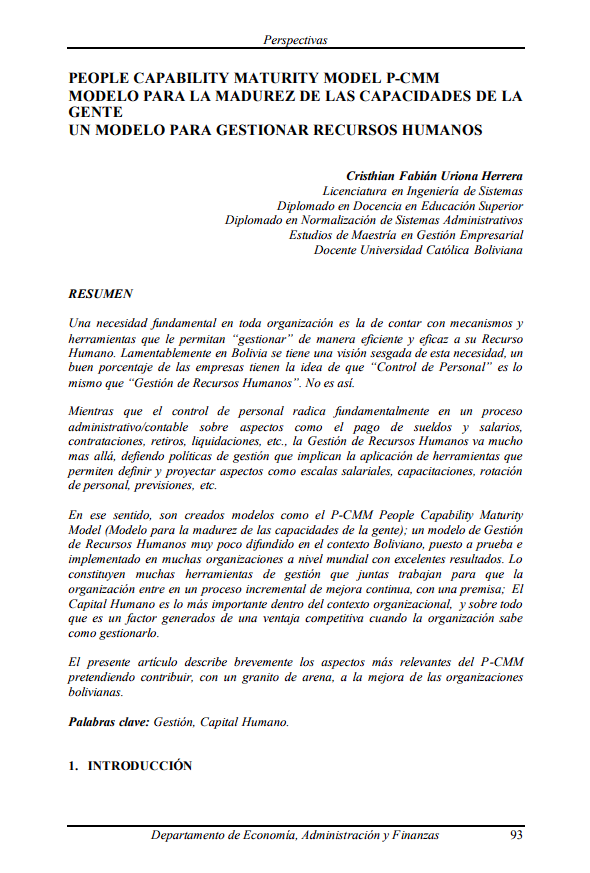Model for the maturity of people's capabilities A model to manage human resources
DOI:
https://doi.org/10.35319/r7p08730Keywords:
Management, Human CapitalAbstract
A fundamental need in every organization is to have mechanisms and tools that allow it to efficiently and effectively “manage” its Human Resources. Unfortunately, in Bolivia, there is a biased view of this need; a good percentage of companies believe that “Personnel Control” is the same as “Human Resources Management.” This is not the case.
While personnel control is fundamentally an administrative/accounting process covering aspects such as salary payments, hiring, terminations, settlements, etc., Human Resources Management goes much further, advocating management policies that involve applying tools that allow defining and projecting elements such as salary scales, training, employee turnover, forecasts, etc.
In this sense, models like the P-CMM People Capability Maturity Model have been created; a Human Resources Management model that is little known in the Bolivian context, tested and implemented in many organizations worldwide with excellent results. It consists of many management tools that work together to help the organization enter an incremental process of continuous improvement, based on the premise that Human Capital is the most important asset within the organizational context, and above all, it is a factor that generates a competitive advantage when the organization knows how to manage it.
This article briefly describes the most relevant aspects of the P-CMM aiming to contribute, even if only a little, to the improvement of Bolivian organizations.
Downloads
References
Curtis, Bill (2001). People Capability Maturity Model® (P.CMM®) Version 2.0. Software Engineering Institute, julio.
Türetken, Oktay (2005). People Capability Maturity Model and Human Resource Management Systems: Do they benefit each other?

Downloads
Published
Issue
Section
License
Copyright (c) 2007 Revista Perspectivas

This work is licensed under a Creative Commons Attribution-NonCommercial-ShareAlike 4.0 International License.
La Revista Perspectivas de la Universidad Católica Boliviana, es una revista de acceso abierto, por lo tanto, es de libre acceso en su integridad. Está permitida su lectura, búsqueda, descarga, distribución y reutilización legal en cualquier tipo de soporte únicamente para fines no comerciales, siempre y cuando la obra sea debidamente citada.




